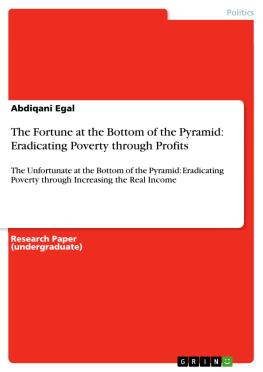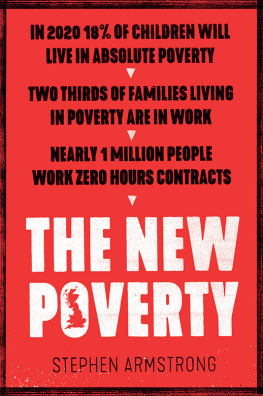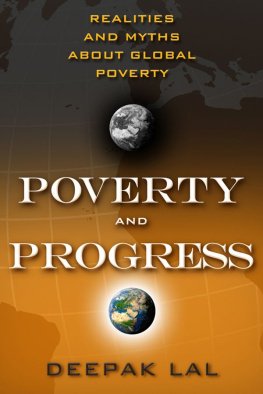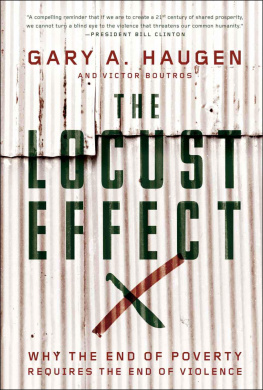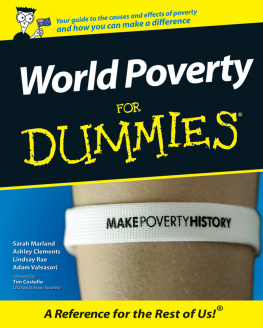Working Hard, Working Poor
WORKING HARD,
WORKING POOR
A Global Journey
Gary S. Fields


Oxford University Press, Inc., publishes works that further Oxford Universitys objective of excellence in research, scholarship, and education.
Oxford New York
Auckland Cape Town Dar es Salaam Hong Kong Karachi
Kuala Lumpur Madrid Melbourne Mexico City Nairobi
New Delhi Shanghai Taipei Toronto
With offices in
Argentina Austria Brazil Chile Czech Republic France Greece
Guatemala Hungary Italy Japan Poland Portugal Singapore
South Korea Switzerland Thailand Turkey Ukraine Vietnam
Copyright 2012 by Oxford University Press, Inc.
Published by Oxford University Press, Inc.
198 Madison Avenue, New York, New York 10016
www.oup.com
Oxford is a registered trademark of Oxford University Press
All rights reserved. No part of this publication may be reproduced,
stored in a retrieval system, or transmitted, in any form or by any means,
electronic, mechanical, photocopying, recording, or otherwise,
without the prior permission of Oxford University Press.
Library of Congress Cataloging-in-Publication Data
Fields, Gary S.
Working hard, working poor: a global journey / Gary S. Fields.
p. cm.
Includes bibliographical references and index.
ISBN 978-0-19-979464-5 (cloth: alk. paper)
1. Working poorDeveloping countries. 2. Labor marketDeveloping countries. I. Title.
HC59.72.P6F54 2011
331.54091724dc23
2011016742
9 8 7 6 5 4 3 2 1
Printed in the United States of America
on acid-free paper
For Vivian,
My constant companion on this journey and my best friend
CONTENTS
ACKNOWLEDGMENTS
Work on this book was supported by Cornell Universityin particular, by Dean Harry Katz of the ILR School (previously known as the School of Industrial and Labor Relations), University Provost Biddy Martin, and the Program on Globalization and the Workplace funded by David and Abby Joseph Cohen. To have had so much time freed up, allowing me to learn and read, travel and write, was a marvelous gift for which I am most grateful.
During the 200910 academic year, I was fortunate to have been able to work on the book at Ko University in Istanbul, Turkey; the Centre for Development Studies in Trivandrum, India; and the Paris School of Economics in Paris, France. I am very appreciative of the hospitality shown by these three great institutions and the opportunity to get to know three special countries better.
I thank countless students and friends for probing discussions while this work was in preparation. You were my target audience, and I thought of many of you often as I decided what topics I wanted to address and how to try to make my points.
I never would have been in this field had it not been for Professor George Johnson of the University of Michigan who urged me as an undergraduate student to go on for a Ph.D. in economics and who invited me as a graduate student to accompany him to Kenya. George died as this book was being completed, leaving us way before his time. His legacy and extraordinary influence live on though his students, grand-students, and great-grand-students.
And finally, to those workers in Africa, Latin America, and Asia who shared their life stories and sometimes their homes with me, I would say that writing this book is the best way I know to make others aware of the lives you lead and the struggles you are facing. It is my fervent hope that by the time my children and grandchildren have completed their work lives, the kind of poverty you are experiencing will have been eradicated once and for all.
PART ONE
How the Poorer Half Works
CHAPTER 1
A Lifes Journey
A VISIT TO HIGH-TECH CHINA
It is Christmas Day 2008. Three thousand workers are busily building Thinkpad computers at a Lenovo factory in Shenzhen, China. The factory is spotless, as are the people themselves. The color of their uniforms indicates their responsibilities: light blue for assembly line workers, darker blue for team leaders, green for factory cleaners, and so on. In white lab coats with black pinstripes designating visitors, the manufacturing manager, his assistant, and I follow the assembly line around, starting with workers collecting the various parts needed for each particular computer (a process called kitting) to assembly to testing through software installation through further testing to packaging and finally to shipping.
These young men and women, all between the ages of eighteen and twenty-three, work extremely fast. At kitting, a bin with parts used by all Thinkpads arrives, a worker scans the order form indicating which specific additional parts are needed, and within five seconds the parts have been added to the bin. About ten seconds later, another computer arrives and the task is repeated. The entire assembly line crew stand at their stations for two hours working nonstop, to be followed by a fifteen-minute break during which they can sit on stools, go to the toilet, or socialize. Three more cycles follow until the nine-hour work day is completed.
Following the plant tour, I am taken to the dormitory where many of these workers live. Leading me are the labor supplier who recruits workers for the factory and two recent university graduates employed in entry-level positions in Lenovos human resource function. Groups of young men live on the fourth floor of the concrete dormitory building, young women on the fifth floor. (It is strictly prohibited for men to enter the womens rooms or women the mens rooms.) Each dormitory room is long and narrow with two-story bunk beds placed adjacent to one another on each side. The first room I see sleeps sixteen young women in a space that is said to be fifty square meters500 square feetbut looks smaller than that to me. Other rooms sleep ten, twelve, or fourteen workers. At the end of each room are two coldwater taps and a single toilet as well as some small windows. The room could be cross-ventilated by propping open the door opposite the windows, but this is manifestly unsafe as it would invite theft of the residents meager possessions.
My hosts and I then have the opportunity to sit down with the workers for a discussion. Dressed in blue jeans, T-shirts, and sneakersquite like the more casual outfits worn by young Americans who attend my university lecturesthe workers tell us their stories. They regard their work as demanding but also desirable. Nearly all have migrated from other provinces of China. What attracted them to this work, they told us, was the prospect of steady employment, enabling them to earn more than they could have at home. One could have been a secretary at home, she says, but she has a desire for a better life and hopes to be promoted. Another dropped out of school and came to work in the factory because her family needs the income. Another says she left school because she was not a good student. A young man tells us he left his rural village because all the other guys at home had already left before him.
These workers are paid 5.7 Chinese yuan per hour which, at the prevailing exchange rate, is about US$0.80 per hour or $7.20 per nine-hour day. Each resident is charged an amount equal to 15% of his or her pay for dormitory rent. Much of the rest of their salary goes for food. Many send money home to their families.
It is helpful to put these workers earnings in perspective. Compared to the U.S. minimum wage, which now is $7.25
Next page


